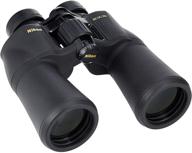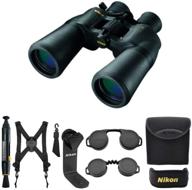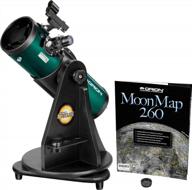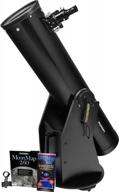
Review on 🔭 SVBONY SV503 Telescope 80ED F7 OTA: Enhanced Views & Astrophotography by Jeff Rothstein

Fantastic telescope, unbelievable price!
Look into the home of any advanced amateur astronomer and you will be surprised not only by the number of telescopes, but also by the fact that there is almost always an 80mm telescope, and you may be even more surprised what that it is used most often. Each telescope has its own benefits, and the 80mm lens is the ideal size for capturing extensive images of the night sky. Many objects in the sky are actually quite large and require a small telescope to image them, see the attached image of the North American Nebula. The 80mm telescope is also ideal when you want a quick look at something but don't want to mount a "big" telescope. Every astronomer has a small telescope that they can use on a tripod when they want to take a quick look. I've been using this telescope for a little over a week and am very impressed. If you're just starting out, this is a telescope to grow into, not out of. It's lightweight at just 6.3 pounds and feels right at home on a tripod or telescope mount. For advanced hobbyists, this telescope is every astrophotographer's dream! The image below shows the North American Nebula and although you can see some coma in the corners, it has more than clear images of the stars. The Galaxy M101 was imaged a few nights later with a HoTech SCA Field Flattener and has over a degree and a half of coma free range. Shot with a cooled IMX294 camera, they consist of 70 two-minute exposures that were stacked and processed in PixInsight. It was taken under a full moon from a lighted suburb of Dallas, the North American nebula was filtered with Optolong l-eNhance and shows what you can do with a good telescope even from a big city. For those just starting to get pictures this may take a while. The moon image consists of two images captured by the SvBony SV305 camera and then merged into one complete image. This caused quite a stir on Facebook as it shows a lot of detail you wouldn't expect from a telescope of this size. The image of Venus was also captured by the SV305 camera. The third image of the solar ledge was captured with 4x Powermate Barlow, a Daystar Quark Hydrogen-Alpha filter and a QHY174GPS camera. It was a combination of two images: one of the prominence and the other of the Sun's surface. The camera was monochrome, so color was added. This telescope is a sun and moon imaging device! WARNING: Do not use to view the sun without proper filtering as this may cause permanent damage to your eyes or equipment! Who should buy this telescope? Those in astrophotography who need something with a wider field of view, people who want to see the sun (make sure you're using an approved solar filter) and the moon. You can also see star clusters, nebulae, and some of the larger, brighter galaxies. Of course, you can observe the planets through this telescope, but the short focal length makes it better for wide-angle objects. If you are a beginner looking for a good telescope that you can later use for astrophotography then this is a great scope to start with as you won't outgrow it. Don't get a star diagonal, eyepiece or viewfinder. This is typical for high-end astrophotography telescopes. If you're just starting out, you'll need a 2-inch SVBONY 90-degree dielectric mirror, a set of eyepieces, a red dot finder and base, and a large tripod or telescope mount (e.g. the iOptron SkyGuider pro, iOptron CEM40 , or Celestron VX mount). ). I would also recommend buying a 2 inch extension tube such as For example, the Orion 5124 2" Eyepiece Extension Tube or the Explore Scientific ESRPEXT2 2" Rod Focusing Extension Tube if you want to do astrophotography. This is a focuser. Contrary to the description, it is not a Crawford type, but a rack type, the latter being the standard for most telescopes. It doesn't matter much, but for astrophotography, Crawford is preferable. a little loose but still usable I was able to add a motorized focuser and although there was some image shifting during focusing (as is common with all rack and pinion focusers) it was still easy to get good focus. The image of the North American Nebula was manually focused. As with almost all refractors for astrophotography, an extension tube (mentioned above) is required to use the camera. Nothing bad, but it would be nice to have it in the kit. Compare this scope to another 80mm ED f/6 scope from another company that costs twice as much. The SV503 was just as good, if not better, in almost every way. The image in the SV503 was brighter even though it was f/7 and the other scope was f/6. The only reason might be that the other scope has three lenses and the SV503 has two, resulting in more light being absorbed. However, it was amazing. Both telescopes had a coma-free field of view of about 1.1 degrees. The SV503 was lighter than the other but slightly longer. Both telescopes had the ability to rotate the focuser to allow for better image alignment with the camera, but the SV503 was much smoother and had a better locking mechanism than the other telescope. Both had rack and pinion focusers and both had similar focusing characteristics. Between the two, the SV503 was the clear winner, even without considering the difference in cost. Pros: 1. Incredible price, about half the price of other 80mm ED telescopes2. Ideal for beginners and advanced hobbyists3. Bright, wide images, excellent telescope for astrophotography4. Get more than 1.1 degrees of sharpness, even more with Field Plane5. The rotation of the focuser is very smooth. Cons: 1. The description lists it as a Crawford focuser, but it is rack and pinion. It still works pretty well.2. Focus extension tube not included. Little problem. Is this telescope worth buying? Definitive! In fact, a friend helped me with the North American Nebula and he liked the M101 so much that he bought it for himself.
- Not cheap but decent
- Style 90
New products
Comments (0)
Top products in 🔭 Binoculars & Scopes

Nikon ACULON A211 8248 10x50 Binoculars (Black)

20 Review

Nikon ACULON 10 22X50 Binoculars Harness

12 Review

Discover The Wonders Of The Universe With Orion StarBlast 4.5 Telescope In Teal Color

14 Review

Explore The Night Skies With The Orion SkyQuest XT8 Classic Dobsonian Telescope

12 Review







